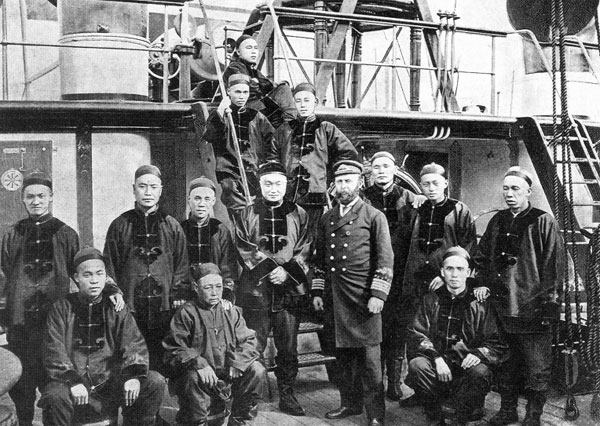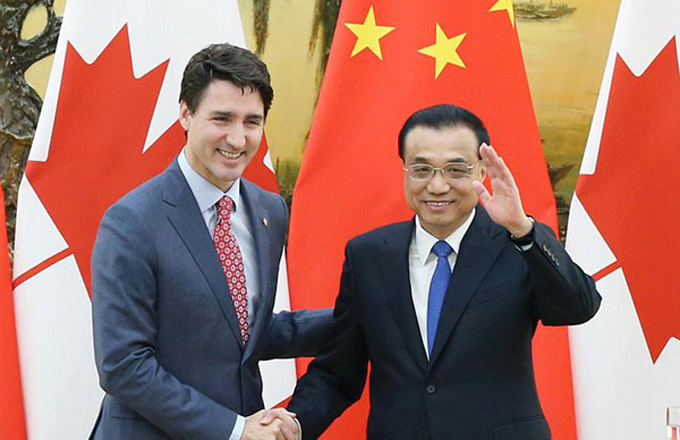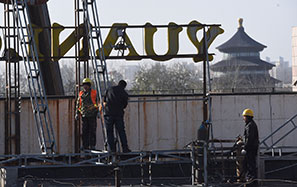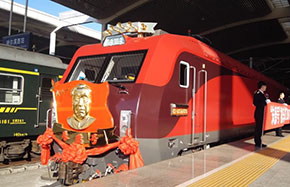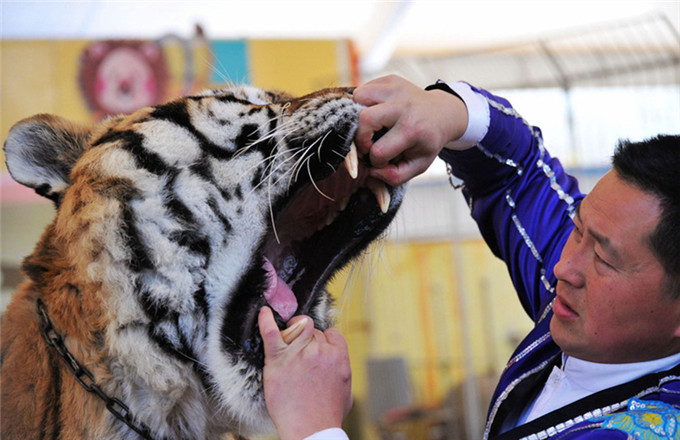Remembering maritime heroes from abroad
More measures are needed to record contributions of foreign officers who served in China's Beiyang fleet, as Peng Yining reports.
|
|
Philo Norton McGiffin, a late 19th century naval officer from the United States, was buried wearing a uniform of imperial China's Beiyang fleet, after he died in 1897.
In a US cemetery in Pennsylvania, McGiffin rests under a tomb carved with the Star-Spangled Banner and a flag sporting the dragon and sun, the ensign of the Qing Dynasty (1644-1911). Beneath the two crossed flags, the inscription reads:
"Commander of the Chinese Battleship, Chen Yuen At the Battle of the Yalu September 17, 1894"
McGiffin was badly wounded in the battle, which was a crucial confrontation during the First Sino-Japanese War, which began in 1894 and ended in 1895 with China defeated.
His health and eyesight were permanently damaged. In a picture he took after the battle, half of his head was bandaged and his trousers blown to shreds.
In a letter he wrote to his father before the war, he said: "China and Japan will soon be at war and it is possible that I may not see you again. If I don't, remember it is a point of honor with me to have stayed: after ten years of service and all their goodness to me, it would be mean of me to desert them now ... you must not grieve too much if I am killed. It is the best way to die. Our cause is right, and, anyhow, I am for China. I do not fear to die. I command a good ship and crew. We don't die if we can help it."
Between 1875 and 1895, when the Beiyang fleet was founded and came to an end, there were more than 200 naval officers and technicians from the US and Europe. They were known as Yang Yuan or foreign officers, who worked for the fleet to help China build a modern navy and fight the Japanese, according to Chen Yue, a historian who has been studying the First Sino-Japanese War for 15 years.
"Despite the defeat of the Beiyang fleet, foreign officers made a great contribution to the Chinese navy and China," Chen said. "They gave their best years and even their lives for a strange people under a strange flag."
Among the eight foreign officers who participated in the Battle of the Yalu River, two were killed and four were wounded.
"I saw a vivid glare in front, and a horrible feeling for about a billionth of a second ... I just thought 'this is death' and knew no more," McGiffin wrote about his experience in the battle.
British officer Alexander Purvis was supposed to return home for a vacation when the war broke out, but insisted on staying and joining the battle as head of the engine department of the battleship Zhi Yuan.
After their vessel had been severely damaged and burned, the Zhi Yuan crew attempted to ram a Japanese battleship but failed. Purvis, aged 29, went down with his ship.
The Chinese people erected two cenotaphs at the port to remember the sacrifice of Purvis and Thomas Nicholls, another British officer who died in the battle at the age of 45.
Li Hongzhang, one of the eight viceroys of China, wrote to the emperor after the battle and said: "They are from overseas, but fought and even died for China. They are brave, loyal and righteous."
The Qing government later gave each of these foreign officers who sacrificed themselves three years' salary as pension to their families.
Learning from the West
Since the mid-19th century, China started to learn from the West to build a modern navy. Starting with preparations in 1875, the Beiyang fleet was commissioned by 1888 and became one of the strongest naval forces in Asia.
China imported the most advanced battleship and weapons from Europe but had insufficient experience, naval professionals and scientific knowledge to navigate this huge modern fleet. In 1881, Ding Ruchang, a Chinese naval officer who became commander of the fleet, brought two battleships from the British city of Newcastle, but could not find anyone in China who knew how to operate the vessels' 10-inch guns.
According to Chen Yue, the naval historian, foreign officers were mostly from Britain, which was the strongest maritime power at that time. Officers also came from France, Germany and the US.
In return, the Chinese government offered attractive salaries, which lured many low-income naval officers from abroad.
As a young graduate of the US naval academy, McGiffin was not able to join the US navy because of budget cuts. He headed to China for work and received a commission as a lieutenant from Li Hongzhang, with a monthly income of $100.
The good pay was also one of the reasons for Thomas Nicholls, a single father of two, to come to China.
Despite the help from the West, the Beiyang fleet was crushed. The defeat shook the regime of the Qing Dynasty, which ended 17 years after the war.
The fleet's headquarters on Liugongdao island, in East China's Shandong province, has since become a museum of the First Sino-Japanese War.
Wang Jihua, deputy director of the museum, said there are few exhibits showcasing the experience of the foreign officers.
"Their experience is a very important part of the war, but few people are studying it," Wang said. "We are eager to have more displays concerning them, and I sincerely ask people who know anything about them to contact us."
Wang said saving the history of the foreign officers has become very difficult. The museum has asked Chinese students who are living in Europe to help look for any such records and it is making travel plans to the West to search for related information and items.
"Many of the officers didn't keep official records. Finding their stories is like finding a needle in the ocean," Wang said.
His museum is open to all kinds of information on the foreign officers and donations related to them.
"We need at least a photo for every one of them. With a picture, they will become more real for visitors," he said. "And through our museum more people will know about them."
Together with the museum, the Chinese People's Association for Friendship with Foreign Countries launched a project to look for descendants of the foreign officers in December 2014.
Li Jianping, deputy director of the association, said the First Sino-Japanese War was a turning point in China's history and the Chinese people should remember this crucial part of it.
"We will always appreciate the contributions made by the foreign officers," Li said.
"They fought and died for China. They are also an important record of the war."
Without a modern archival system, China had few official records of the war, especially stories of soldiers and details of the battles. After the war, many officers such as Briton William Ferdinand Tyler published memoirs and articles. These have become important historical documents of the conflict.
Another such item is a letter of commendation from the Beiyang fleet to British officer Charles Cheshire displayed in a maritime military museum in London.
"The foreign officers tell stories about China and the war to people across the world. They helped China during and after the battles," Li said.
"By knowing them, we know ourselves."
Contact the writer at pengyining@chinadaily.com.cn


